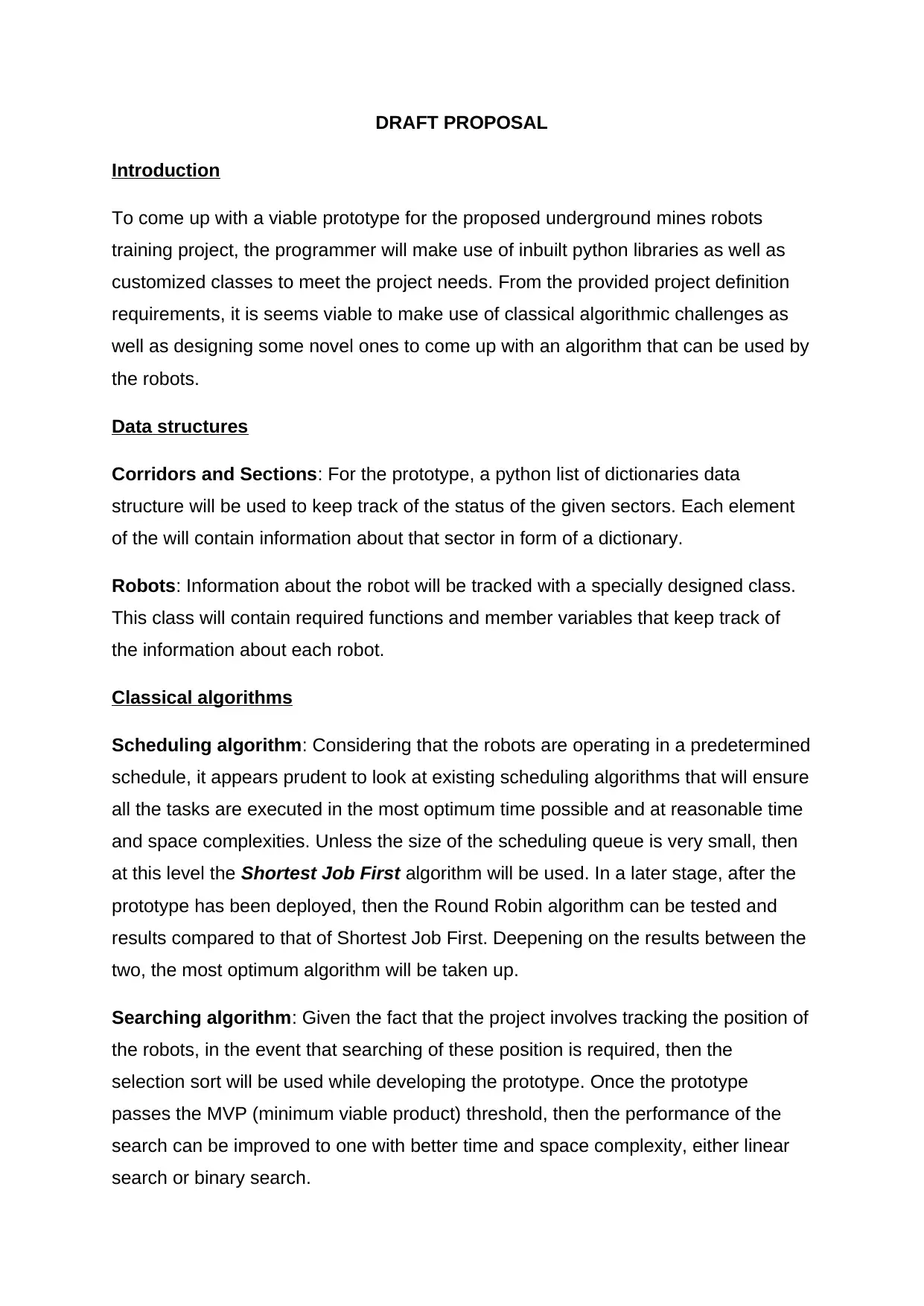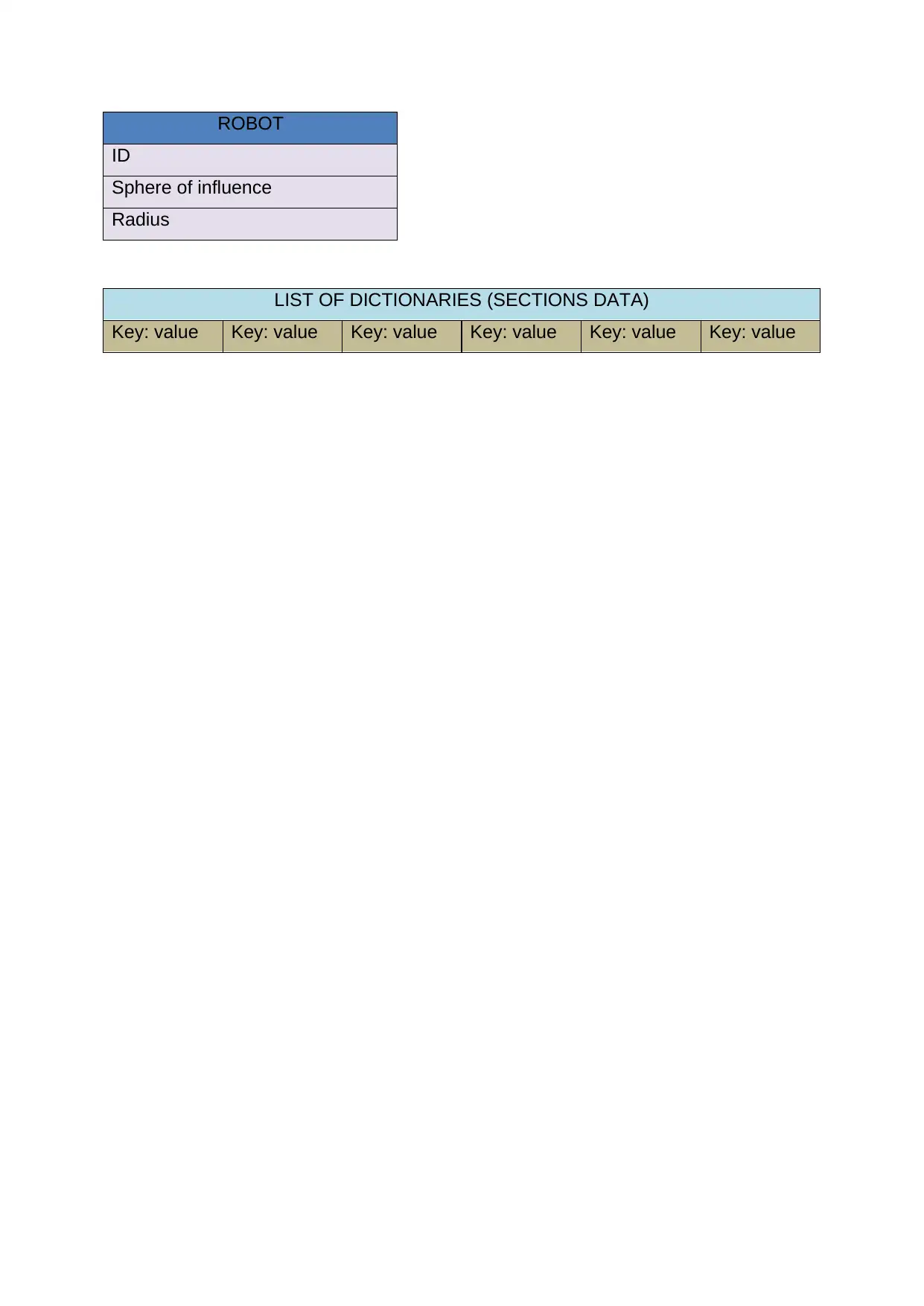Robot Prototype: Mining Underground - AI, University XYZ
VerifiedAdded on 2022/08/15
|2
|386
|10
Project
AI Summary
This project outlines the development of an AI-driven robot prototype designed for underground mining operations. The assignment focuses on utilizing Python programming language to implement essential features, including scheduling and searching algorithms. The prototype will incorporate data structures such as dictionaries and a specifically designed class to manage robot information. For scheduling, the Shortest Job First algorithm is proposed initially, with the potential to evaluate the Round Robin algorithm later. The searching algorithm will use selection sort, which can be optimized after the MVP stage. The project also includes the use of a dictionary-based data structure to manage the status of the sections and also the robot IDs and their respective sphere of influence. The aim is to provide an efficient solution for managing and optimizing the robots' tasks and movements within the underground environment. The assignment details the initial design and implementation considerations for this AI-driven system.
1 out of 2


![[object Object]](/_next/static/media/star-bottom.7253800d.svg)